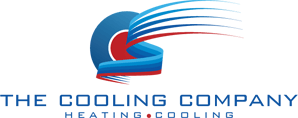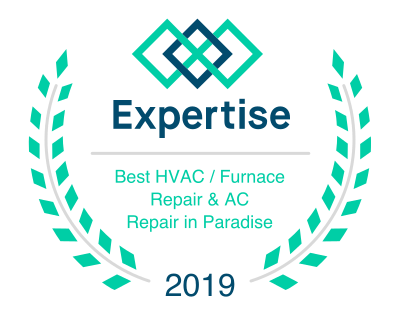Your residential HVAC system, potentially consisting of a heat pump or furnace, is crucial to maintain comfort in your home when outside temperatures vary greatly. Regular maintenance, which includes various inspections and tasks like checking for gas leaks and making sure heating elements are functioning properly, will keep your equipment at peak operating efficiency for longer and drive a higher return on investment because you’ll save on energy costs each month. This will, in turn, provide a higher level of home comfort year-round.
In this blog, we present you with your ultimate residential checklist, especially useful in the fall when seasonal changes are more frequent. This list covers recommended inspections and tasks that apply to all seasonal changes. Each task, from checking belts to lubricating moving parts, reduces the risk of equipment failure along with higher operating and repair costs.
Change your air filters
Proper airflow is essential to optimal HVAC system performance, and the best way to enable strong airflow is by replacing your filters as needed and ensuring all registers are clean and unblocked. When filters become clogged with dirt and debris, it reduces the efficiency of your HVAC unit and can strain its components, including belts and heating elements, to the point that expensive repairs become necessary.
Check the condensate drain
Regular inspections should also include a careful check of the condensate drain whenever you replace the filter. This component, which looks like a metal or plastic tray, collects the moisture produced by the air conditioning coil. If the drain doesn’t drain all the water collected, any resulting overflow could damage your HVAC unit or your property. If you notice standing water or a leak in the hose connecting the tray to the drain, call your local HVAC technician for assistance.
Clear away dirt and debris
If your HVAC system includes a ground-level outdoor unit, make sure to inspect and lubricate it every week, also removing any fallen leaves, cut grass, dirt, ice, and other debris that could impact its functionality. During spring and fall, trim back any nearby plants or bushes to give the unit one to two feet of clearance to maximize airflow and optimize performance.
Use gloves and, if necessary, a hose to carefully clean the unit after shutting it down for maintenance. During this inspection, make note of the condition of the external panels. If any look damaged or if the insulation around the refrigerant line running from the unit to the house is damaged or missing, contact your HVAC technician.
Clean your vents
When you’re preparing your HVAC system for another season, it’s important to inspect and clean the vents in your home, where dust, pollen, and other contaminants can accumulate quickly.
Ensure every vent in the house is open, clearing any obstacles that may be blocking output like furniture, curtains, or rugs. Carefully remove the grills from the vents, vacuum them to remove accumulated dust or pet hair, and wash them with water and mild soap. Afterward, maintain clean vents by wiping them with a damp rag at least once a week as part of your regular household cleaning routine.
Vents that are clear and free of obstruction allow your residential HVAC system to maintain your home at the desired temperatures without overstressing any components.
Clean condenser coils
The ‘grill’ or condenser coils on your HVAC unit are composed of thin wires on the outside of the condensing unit. If dust is allowed to buildup on these coils, it can cause the motor to work harder and use up more energy.
Lightly cleaning the coils with a soft-bristle brush or broom at least once a year will make your unit function more efficiently. Because these coils are delicate and easily damaged, only use gentle pressure and ensure your brush strokes are parallel to prevent bending the metal.
Adjust your programmable thermostat
Invest in programmable thermostats if you haven’t done so already and set them up to ensure that your home is always at a comfortable temperature when you return after a busy day. Thermostats play a vital role in maintaining the desired temperature, and regular checks ensure they function optimally.
These devices, like an updated wiring system or energy-efficient motors, save on energy because it keeps your HVAC unit running less when no one is home. It’s important to maintain a routine business maintenance checklist that includes updating wiring and checking elements like pulleys and fan motor, to ensure optimal efficiency.
Check your duct sealing
According to Energy Star, between 20 and 30% of the air moving through the duct system of a typical home is lost due to cracks, leaks, and poor connections. This might also include errors in the flue system or cabinet – so if you are experiencing any of the following issues, your home probably has a ductwork problem.
- Excessively high utility bills during the winter and summer
- Rooms that are never comfortable no matter what the thermostat setting is
- Ducts that are tangled, kinked or located in places like the garage or attic will also affect the indoor temperatures.
You can correct some duct performance issues yourself, such as maintaining drain lines and bearings, by using metal tape or mastic sealant (never duct tape) to insulate ducts within accessible spaces such as the garage, unfinished basement, or attic. Make sure that the vent connections are properly sealed where they meet the walls, floor, or ceiling, as these are areas that are prone to leaks and faulty connections.
If the DIY route doesn’t resolve your air loss issue, contact your HVAC contractor. Ducts that are behind walls and ceilings can be difficult to access and repair yourself, so seek professional assistance. A properly structured and well-sealed duct system, using our business maintenance checklist, will support your home’s comfort and energy-efficiency.
Keep your home energy-efficient
When you make your home more energy-efficient by using the checklist, it puts less pressure on your system. You can reduce your climate control needs during the summer by ensuring that your attic is well-ventilated, closing your blinds or curtains to keep out sunlight during the hottest times of the day, and even cooking outside to limit the amount of heat thrown off by your kitchen appliances.
Similarly, in the winter you can:
- Confirm that your home’s insulation is in good shape and will prevent heat from escaping.
- Keep windows closed so that warm air doesn’t get out and cold air doesn’t make its way in.
- Lower the thermostat setting when you host a holiday party or other event involving a large number of guests.
Test your HVAC system
Once you have completed all the tasks on your HVAC maintenance checklist, which includes checking the pulleys, drain lines, and fan motor, turn on your system. After it has been running for a few minutes, go from room to room to confirm that cool air is circulating throughout the house.
If you notice that the cooling is subpar or uneven, check the thermostat to confirm that it is set at the right temperature. If the thermostat settings are correct, call your HVAC technician. The issue could be related to the cabinet or the flue system needing maintenance, or the coolant may need replacing or a system tune-up is in order.
Schedule a regular system tune-up
Your HVAC system should be inspected and calibrated at the beginning of each season, as regularly scheduled maintenance will keep it in good shape for years to come. The technician will use your established maintenance checklist to take steps to address problems and improve system performance.
- Checking the settings on the thermostat to confirm that the system is doing its job of delivering energy-efficient heating and cooling.
- Inspecting the condensate drain and clearing away any clogs to prevent water damage and higher indoor humidity levels.
- Lubricating all moving parts to prevent friction in motors and limit the amount of electricity they need to use.
- Tightening all system electrical connections and measuring motor voltage and current. Any faulty connections can reduce the working life of key components and cause your HVAC system to run unsafely.
- Checking the controls to confirm that the system starts up, operates, and shuts off properly.
- Thoroughly cleaning the evaporator and condensing coils. When the coils become too dirty, it minimizes the HVAC system’s ability to keep your home comfortable and will cause it to run longer, which may lead to system breakdown in addition to higher energy costs.
- Cleaning and adjusting the blower to ensure correct airflow. Reduced airflow can lower system efficiency by up to 15%.
- Checking the refrigerant level and adjusting if necessary. Improper refrigerant levels will make the system less efficient.
- Checking all gas and oil connections in addition to the heat exchanger, burner combustion, and gas pressure. Faulty connections can lead to health problems and create a fire hazard while a cracked heat exchanger or dirty burner causes the burner to function improperly.
When you schedule regular maintenance visits, you will quickly recoup your investment in the form of the following benefits:
- Better indoor air quality
- Reduced household energy bills
- Longer HVAC system efficiency and service life
- Fewer repair costs over the lifecycle of the equipment
- Peace of mind from knowing that your system will perform as needed
Replace an outdated system
If you’ve had your HVAC system for at least ten years, consider replacing it. Although a new unit is a big investment, the costs of repairing an old and inefficient system— like its bearings or cabinet— add up. If you’ve experienced any of these issues, it may be time to arrange a replacement.
- Your air conditioner has a low SEER rating. In Las Vegas, all modern systems must have a minimum SEER rating of 14. If yours is lower, replacing it with a newer and more efficient unit will help you cut back on energy costs.
- The A/C unit uses R22 Freon, which is being phased out and will become illegal on January 1, 2020. You’ll have to replace it eventually, so why not now?
- The system breaks down frequently. If you’re calling an HVAC technician on a monthly basis because of ongoing problems with the unit, save yourself the stress and money by investing in a new one.
- You’re having a hard time keeping your home comfortable. If your home doesn’t seem to stay cool no matter how often you adjust the thermostat, your system may not be the right size for your space or it has become too old to do its job properly.
Call an HVAC professional when necessary
While you can generally handle air filter changes, dirt removal, and other simple maintenance tasks, there will be times when you want to call an HVAC technician. Examples of such situations could include handling the pulleys, checking the wiring, and carrying out maintenance on the drain lines.
- The outdoor unit will not shut off and/or makes loud and unusual sounds
- The indoor fan keeps running
- The indoor unit experiences a water leak
- Calling an HVAC professional will ensure that all necessary repairs, from the flue system to the fan motor, are done correctly the first time, reducing the risk of needing more expensive repairs in the future.
Although HVAC systems can be complex, there are basic preventive maintenance procedures you can perform to keep your unit running at its best. It’s vitally important to follow our list, which takes into consideration the latest practices for HVAC maintenance. For more advanced issues, give us a call at (702) 567-0707 or schedule a consultation, and we’ll provide the service and expertise you need to stay comfortable all year round.












